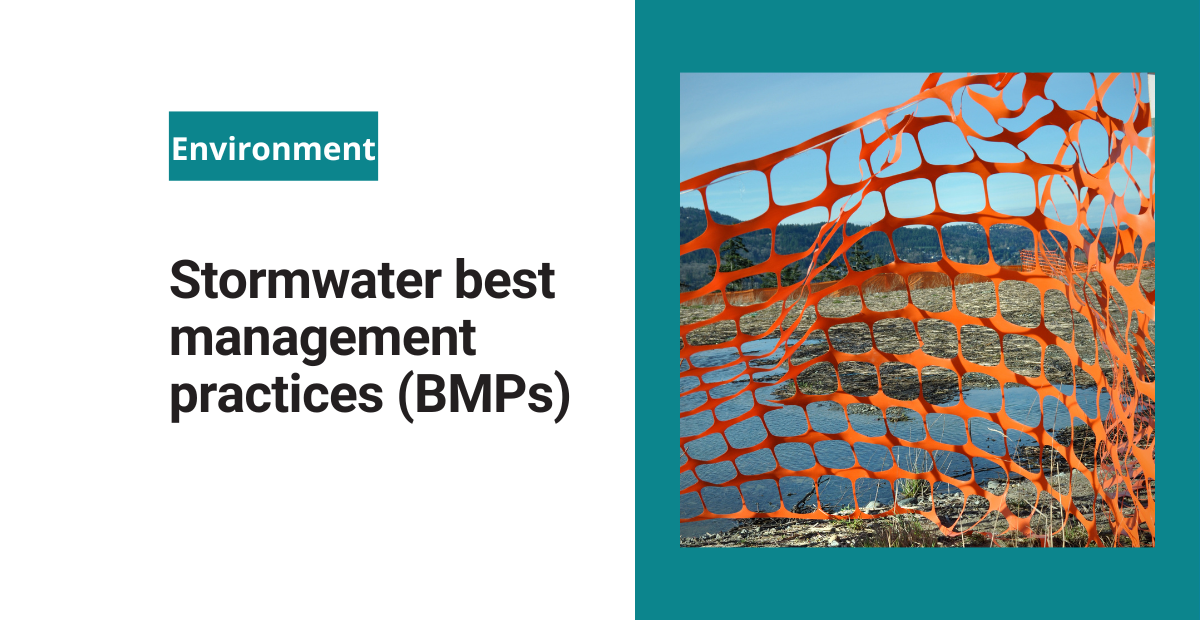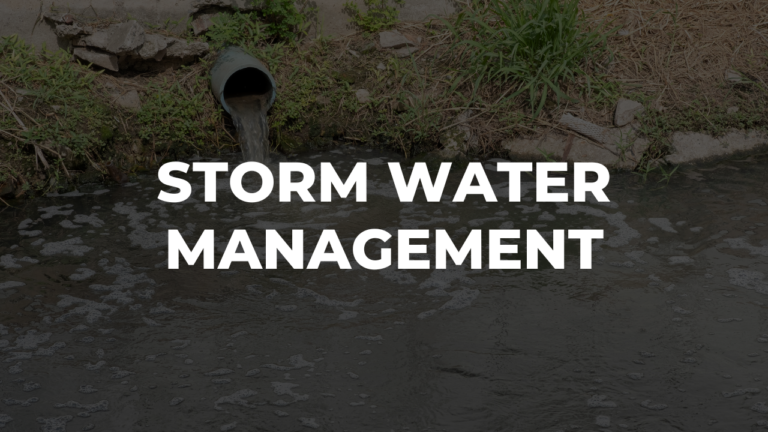When it comes to municipal water management, stormwater runoff is a significant source of pollution in many communities. But city leaders are not helpless in the fight against these contaminants.
Using a stormwater BMP, or “best management practice,” is a common approach for the treatment and prevention of widespread pollution in public water sources.
Point vs nonpoint sources of pollution
Before you can decide how best to manage stormwater runoff, it’s important to understand the difference between point and nonpoint sources of pollution.
According to section 502(14) of the Clean Water Act, the term “point source” refers to:
“Any discernible, confined and discrete conveyance, including but not limited to any pipe, ditch, channel, tunnel, conduit, well, discrete fissure, container, rolling stock, concentrated animal feeding operation, or vessel or other floating craft, from which pollutants are or may be discharged.”
Naturally, a “nonpoint source” is any other type of source that does not fit this definition.
The EPA offers some examples of nonpoint sources on its website, namely things like excess pesticides and other chemicals which flow from agricultural and urban runoff locations.
The role of stormwater best management practices
As water flows uninterrupted into local waterways, it brings debris, chemicals, waste, and other pollutants with it. This convolutes shared water sources and makes it harder for treatment facilities to filter out contaminants.
Stormwater BMPs are systems that combat these issues and reduce the amount of pollution in communal waterways. They do this by preventing water flows from carrying contaminants from the source to another destination.
Some of the biggest benefits of using a stormwater BMP are that it:
- Preserves landscaping elements
- Reduces the likelihood of water-related public health issues
- Slows down quick water flows to avoid major flooding
- water resources
- Decreases topsoil erosion
- Stops contamination on worksites
And since there are so many best management practices already out there, businesses have many ways to reap these benefits for both their workers and the surrounding community. These BMPs are generally split into two categories: structural and nonstructural.
Structural BMPs
A structural stormwater BMP is one that’s physically built to reduce the amount of contamination in the water system. Examples of these types of structures include:
- Infiltration basins and trenches
- detention and/or wet ponds
- Rain gardens and rain barrels
- Porous pavement (asphalt, bricks, concrete, etc.)
- Restoration of floodplains, landscaping, etc.
These BMPs often tackle point source pollution by targeting a specific source.
For example, detention ponds help divert stormwater to what is essentially a temporary storage location. This gives time for debris and other large pollutants to settle down into the pond and prevents them from free flowing elsewhere.
Another good example is porous pavement, which helps to filter pollutants out of stormwater before they settle into the soil beneath.
Nonstructural BMPs
Nonstructural stormwater BMPs have the same goal: to prevent pollutants from flowing into unwanted areas. Instead of point-specific implementations, however, these BMPs are built into the fabric of a community.
They take the form of things like:
- Stormwater training and public education
- Urban landscaping planning
- Conservation of areas at high risk of pollution
- Municipal ordinances
The nonstructural stormwater BMP category also includes practices which deal with human behavior. A good example of this is the regular cleaning of municipal vehicles to ensure that hazardous materials aren’t spread around the community.
Although simple, adherence to these best practices can make all the difference in preventing widespread stormwater pollution.
Implementing a stormwater BMP
Most projects and worksites need a mixture of structural and nonstructural BMPs for successful waste management. A good rule of thumb is to include these practices in your documentation. Write out the BMPs you’ll use in:
- Site development plans
- Project proposals
- Standard operating procedures
- Training materials
It’s not just enough to put these measures in your plans—make sure you implement them onsite quickly. There may be times when it’s not clear whether BMPs are necessary, but it’s always a good idea to include them if you’re not sure.
This is especially true given the unexpected nature of site inspections. Not having “suitable” stormwater pollution prevention measures in place can delay a project, wasting time and money in the process.
Get the BMPs up and running so you can move on to the actual work. And of course, don’t forget to institute an audit process to make sure your worksite adheres to stormwater management standards.
Other posts you might like…
No posts

